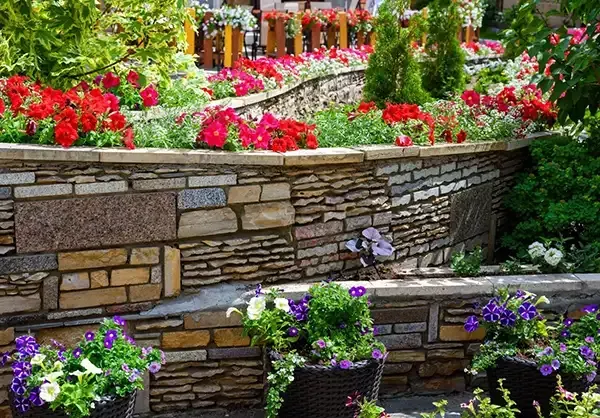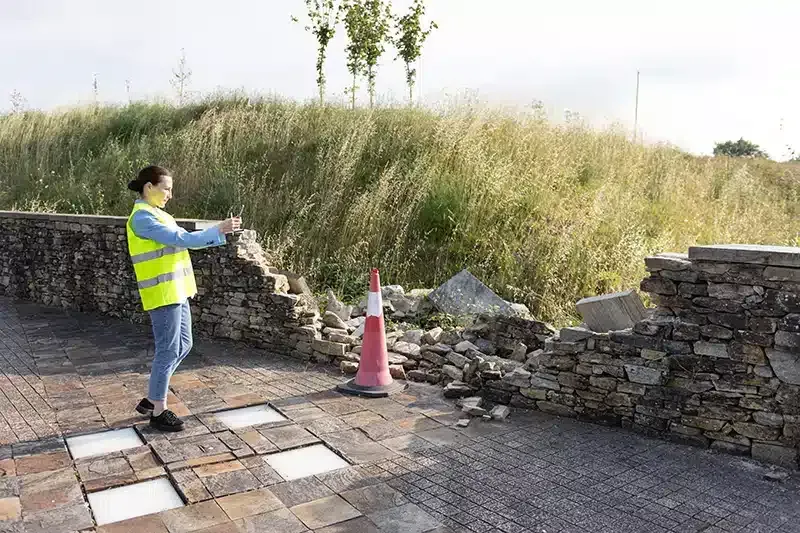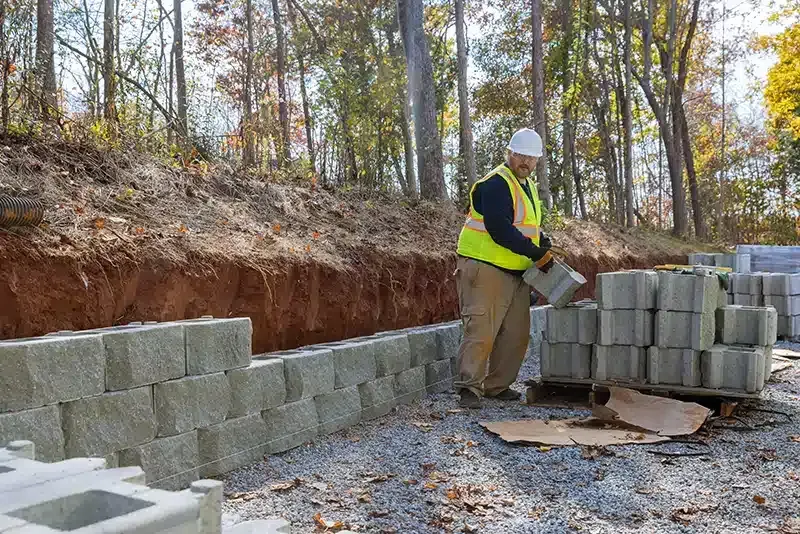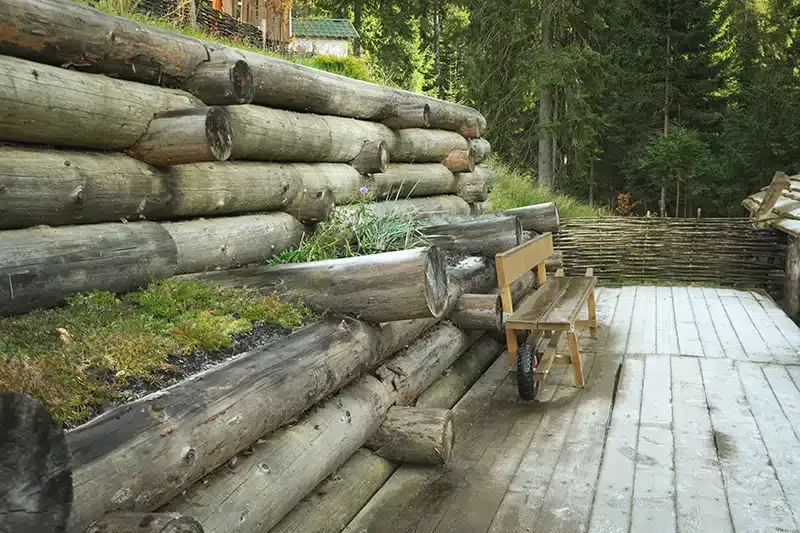What Benefits Do Retaining Walls Provide for Commercial Landscapes?

When considering the landscape of your commercial property, retaining walls can play a crucial role.
They not only prevent soil erosion but also enhance the aesthetic appeal of your space. Imagine transforming uneven terrain into usable areas for gardens or outdoor gatherings.
But that's just the beginning.
There are more benefits to discover that could significantly impact your property's value and functionality.
Preventing Soil Erosion
Soil erosion can cause serious damage to your commercial landscape, but strategic solutions can help maintain stability and structure.
Importance of Erosion Control
Unchecked soil erosion can lead to costly repairs and landscape deterioration.
- Loss of Topsoil: Erosion depletes nutrient-rich soil, impacting plant growth.
- Foundation Damage: Soil displacement can weaken the stability of walkways, patios, or building foundations.
- Drainage Issues: Poor runoff management may cause water to pool in unwanted areas.
Solutions for Erosion Prevention
Implementing effective measures can protect your landscape from damage.
- Install Retaining Walls: These structures hold soil in place, reducing washouts.
- Use Mulch and Ground Cover: These materials help absorb rainwater and stabilize soil.
- Add Drainage Systems: Directing water flow away from key areas prevents soil displacement.
By prioritizing erosion prevention, you can protect your landscape's health, stability, and long-term appeal.
Enhancing Aesthetic Appeal
A thoughtfully designed landscape not only boosts curb appeal but also strengthens your business’s professional image.
Visual Impact of Retaining Walls
Retaining walls can be both practical and visually appealing.
- Material Variety: Choose from wood, stone, or concrete to match your landscape's style.
- Color and Texture: Blending different finishes can create eye-catching designs.
- Defined Spaces: Use walls to separate gardens, pathways, or seating areas for a polished look.
Creating a Welcoming Atmosphere
Well-designed outdoor spaces leave a lasting impression on visitors.
- Incorporate Lighting: Highlight your retaining walls at night to enhance ambiance.
- Add Greenery: Planting flowers or shrubs along the walls softens the look and adds color.
- Focus on Maintenance: Clean and well-kept walls show professionalism and care.
By enhancing your landscape’s aesthetic appeal, you create a welcoming space that leaves a positive impression on clients and visitors alike.
Maximizing Usable Outdoor Space
Retaining walls are a smart solution for transforming sloped or uneven terrain into functional outdoor spaces.
Expanding Functional Areas
Retaining walls create level surfaces, making previously unusable areas accessible.
- Outdoor Seating: Establish inviting seating areas for guests or employees.
- Garden Spaces: Create vibrant flower beds or greenery-filled zones.
- Patios and Walkways: Design smooth, stable surfaces ideal for foot traffic.
Defining Purposeful Zones
Retaining walls help organize your landscape effectively.
- Event Areas: Designate clear spaces for social gatherings or outdoor meetings.
- Recreational Spaces: Add play areas or relaxation spots.
- Water Management: Control runoff to keep these spaces dry and accessible.
With strategic design, retaining walls enhance both the functionality and appeal of your commercial property.
Retaining walls provide essential benefits for commercial landscapes by preventing soil erosion, enhancing visual appeal, and maximizing usable outdoor space.
With thoughtful design and proper installation, these structures improve your property's functionality while creating a welcoming environment for clients, employees, and visitors.
Investing in retaining walls is a smart way to protect your landscape and boost your property's overall value.


